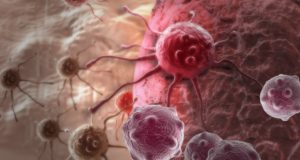When the body is young, balance isn’t really much of a problem, and most people can easily avoid painful stumbles and falls. Unfortunately, Father Time often saps the body this ability, reducing our coordination and reaction speeds. On a positive note, certain exercises can help shield older adults and seniors from balance-related injuries.
- Single Leg Stance ‒ This an easy balance-building exercise, which only takes up a short amount of time. Simply stand upright and grip the back of the chair, or something else that can support your body. Once you’re in the proper position, lift one of your legs a short distance off the floor. Hold this position for five seconds, then place the leg back on the ground. In you want more of a challenge, you can try balancing on one leg with your eyes closed, or avoid holding the back of the chair. Perform five repetitions for each leg.
- Chair Stands ‒ Chair stands are yet another straightforward activity that can improve balance. Take a seat on an armless chair, and cross your arms across your chest. In this position, your right hand should be touching your left shoulder, and vice versa.To prevent your chair from moving backwards, you might find it helpful to place it against a wall. When performing this activity, make sure not to look downwards towards the floor. Instead, keep your head looking forward as your stand and sit back down. Continuously repeat this exercise until you have reached ten or fifteen repetitions. You can begin another set after resting for a full minute.
- Heel-to-Toe Walk ‒ Many people with balance difficulties benefit from practicing the heel-to-toe walk. The “heel to toe” term refers to where the feet are positioned during the walk; when stepping forward, the heel of the moving foot is placed directly in front of the planted foot’s toes. The heel-to-toe walk should be performed at an arm’s-length distance from a wall, with your hands extending sideways at shoulder-level. Since it might be difficult to maintain your balance, you can keep the fingertips of one arm gently pressed against the wall’s surface. Try to walk alongside the entire length of the wall; when you become accustomed to this activity, you might consider walking with your arms crossed.
- Balance Walk ‒ When you first try it, the balance walk might be somewhat difficult to pull off. First, you will have to raise your hands sideways, to the point that they are level to your shoulders. Before walking, direct your concentration to a certain spot in front of you. Keep your eyes affixed to this spot as you walk. Lift your thigh so that it is parallel to the ground. Keep it in the air for one second, and then take a step forward, placing your foot directly in front of the other. Repeat the same process with your back leg. Aim for a total of twenty steps.
- Side/Back Leg Raises ‒ For side leg raises, begin by grasping the back of a chair as you stand behind it. Inhale, and then exhale as you carefully lift one leg in a sideways direction. When performing this activity, it’s important to keep your back from bending. Your standing leg, however, should be bent at a slight angle. Try to keep your leg in the air for full second, and aim for ten to fifteen repetitions for each leg. Take another breath in as you bring your leg back to its starting position. Back leg raises are fairly similar. Once again, you’ll have to hold on to the back of a chair. As with side raises, you will need to breathe in before lifting your leg. Raise your leg backward into the air and exhale; after one second, inhale and bring your leg back towards the ground. In total, raise each leg between ten to fifteen times.
 Natural Knowledge 24/7 Educate yourself with nutrition, health and fitness knowledge.
Natural Knowledge 24/7 Educate yourself with nutrition, health and fitness knowledge.






